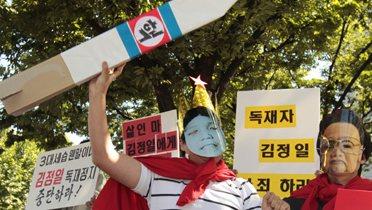EXECUTIVE SUMMARY
Extended nuclear deterrence has been one element of the broader United States security policy towards East Asia. Because Washington has been willing to threaten the use of nuclear weapons against adversaries of its allies, those allies have felt less compelled to pursue a nuclear option. Taiwan and South Korea did try during the Cold War, only to be dissuaded by the United States. Japan and Australia have occasionally considered the option, only to remain under the shelter of the U.S. nuclear umbrella.
Learn more about Richard Bush’s recent presentation on extended deterrence »
The end of the Cold War, the region’s rise on the global economic and security agendas, and recent shifts in U.S. nuclear policy have modified the extended deterrence dilemma but have not negated it. Conservative and progressive observers in Australia, Japan, and South Korea have conflicting views on the implications of that dilemma for their security. They and their respective governments view documents like the 2010 U.S. Nuclear Posture Review through the prism of long-standing expectations and anxieties about American credibility and resolve regarding a resurgent China and an unpredictable North Korea.
Given the uncertainty about Chinese, North Korean, and U.S. intentions, some American allies proposed the creation of a mechanism akin to the nuclear planning group in NATO, a body where the alliance’s nuclear and non-nuclear powers discuss how nuclear weapons might be used in a conflict. This proposal ignores the fact that the geopolitics and power asymmetries of Cold War Europe are different than those of contemporary East Asia and how conflict might occur. So any such mechanism created with Australia, South Korea, and Japan would have to be adapted to regional realities. In particular, it should be part of a larger multilateral effort to reassure China that it is not the object of containment and so reduce the salience of nuclear weapons in the PRC’s security planning.
In the short term, the United States and its allies should both reaffirm their interest in a balanced settlement of the North Korea nuclear issue and stress the need to prepare for the possible collapse of North Korea. In the medium term, the United States should continue to pursue a dialogue with China on strategic weapons and consider establishing bilateral channels for consultations with the governments of Australia, South Korea, and Japan on the requirements and needs of effective extended deterrence, including considerations that would guide U.S. nuclear weapons use. And it should continue to encourage the process of reconciliation underway between the two sides of the Taiwan Strait, since that process reduces the possibility of conflict between the United States and China.



